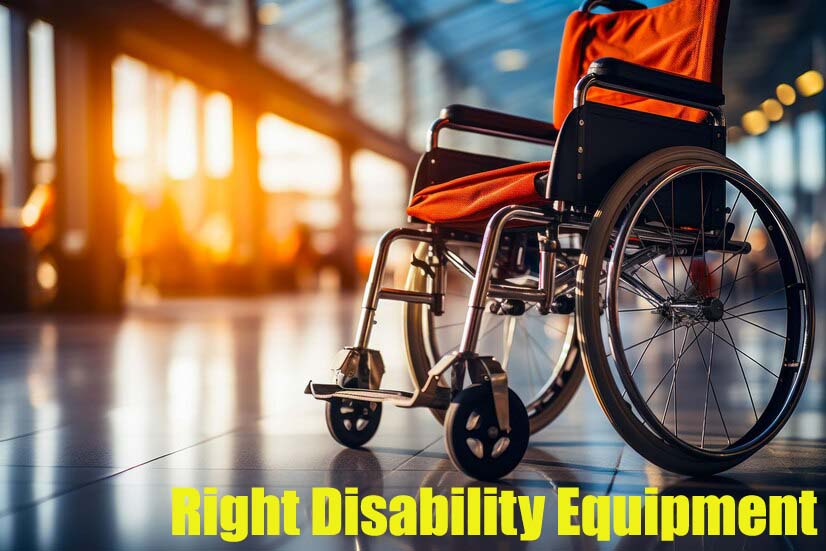Finding the right disability equipment is essential for enhancing the quality of life and independence of individuals with disabilities. From mobility aids to adaptive devices, the right equipment can make daily tasks easier and more manageable. This guide provides an overview of the types of disability equipment available, factors to consider when choosing equipment, and tips for making the best choice for your needs.
Understanding Disability Equipment
Types of Disability Equipment
- Mobility Aids
- Wheelchairs: Manual and electric wheelchairs offer varying levels of mobility and support.
- Walkers and Rollators: Provide stability and support for those who can walk but need assistance.
- Scooters: Electric scooters are ideal for individuals with limited stamina or severe mobility impairments.
- Daily Living Aids
- Grab Bars and Handrails: Installed in bathrooms and other areas to provide support and prevent falls.
- Reachers and Grabbers: Extend the reach of individuals, making it easier to pick up items without bending.
- Shower Chairs and Bath Lifts: Ensure safety and comfort while bathing.
- Communication Aids
- Speech Generating Devices (SGDs): Assist individuals with speech impairments in communicating effectively.
- Hearing Aids: Amplify sound for those with hearing loss.
- Braille Devices: Enable individuals with visual impairments to read and write.
- Home Adaptations
- Ramps: Provide wheelchair access to homes and buildings.
- Stairlifts: Allow safe navigation of stairs for individuals with mobility issues.
- Automated Systems: Control home appliances and systems via remote or voice command.
Factors to Consider When Choosing Right Disability Equipment
Individual Needs and Preferences
Every individual has unique needs and preferences. Consider the specific challenges faced and the level of support required. Personal preferences, such as comfort and ease of use, are also crucial in making the right choice.
Safety and Reliability
Safety is paramount when selecting disability equipment. Ensure that the equipment meets safety standards and has reliable features that prevent accidents. Reading reviews and seeking recommendations can help gauge the reliability of the product.
Ease of Use
The equipment should be user-friendly and not require excessive effort to operate. Consider the individual’s strength, dexterity, and cognitive abilities when choosing equipment that is easy to use and maintain.
Cost and Insurance Coverage
Disability equipment can be expensive. Check if the equipment is covered by insurance or if there are any financial assistance programs available. Compare prices and look for options that offer the best value without compromising on quality.
Durability and Maintenance
Invest in durable equipment that can withstand daily use. Consider the maintenance requirements and whether the equipment comes with a warranty or service plan. Regular maintenance ensures longevity and reliable performance.
How to Choose the Right Mobility Aids
Wheelchairs
Manual Wheelchairs:
- Ideal for individuals who have upper body strength and can self-propel.
- Lightweight and easy to transport.
Electric Wheelchairs:
- Suitable for those with limited upper body strength or severe mobility impairments.
- Offer features like adjustable seats, speed control, and longer battery life.
Walkers and Rollators
Walkers:
- Provide maximum stability with four legs and are ideal for indoor use.
- Some models come with wheels for easier movement.
Rollators:
- Feature wheels on all legs and a built-in seat for resting.
- Ideal for outdoor use and provide better maneuverability.
Scooters
Three-Wheel Scooters:
- Offer better maneuverability and are suitable for indoor use.
- Compact and easy to transport.
Four-Wheel Scooters:
- Provide greater stability and are ideal for outdoor use.
- Have a higher weight capacity and more comfortable seating options.
Daily Living Aids: Enhancing Independence
Bathroom Safety Equipment
Grab Bars and Handrails:
- Install in strategic locations like showers, tubs, and near toilets.
- Ensure they are securely mounted to support the individual’s weight.
Shower Chairs and Bath Lifts:
- Provide stability and safety while bathing.
- Choose models with non-slip seats and adjustable height settings.
Reachers and Grabbers
- Extend the reach, making it easier to pick up items from the floor or high shelves.
- Look for models with comfortable grips and rotating claws for better functionality.
Communication Aids: Bridging the Gap
Speech Generating Devices (SGDs)
- Assist individuals with speech impairments in communicating effectively.
- Choose devices with customizable options and easy-to-use interfaces.
Hearing Aids
- Amplify sound for individuals with hearing loss.
- Consider the degree of hearing loss and choose devices that offer clear sound quality and noise reduction features.
Braille Devices
- Enable individuals with visual impairments to read and write.
- Look for portable devices with easy-to-navigate interfaces and compatibility with other technology.
Home Adaptations: Creating an Accessible Environment
Ramps
- Provide wheelchair access to homes and buildings.
- Ensure the ramp has a gentle slope and is made from durable, non-slip materials.
Stairlifts
- Allow safe navigation of stairs for individuals with mobility issues.
- Choose models with comfortable seating, safety belts, and remote control operation.
Automated Systems
- Control home appliances and systems via remote or voice command.
- Consider systems that integrate with smart home technology for ease of use.
Conclusion
Choosing the right disability equipment is crucial for enhancing the independence and quality of life of individuals with disabilities. By considering individual needs, safety, ease of use, cost, and durability, you can select the best equipment to meet those needs. Whether it’s mobility aids, daily living aids, communication devices, or home adaptations, the right equipment can make a significant difference in the daily lives of those with disabilities.
FAQs
- What should I consider when choosing a wheelchair?
Consider the individual’s mobility level, comfort, ease of use, and whether a manual or electric wheelchair is more suitable.
- Are there financial assistance programs for purchasing disability equipment?
Yes, many insurance plans, government programs, and non-profit organizations offer financial assistance for disability equipment.
- How do I ensure the safety of bathroom aids?
Ensure grab bars and handrails are securely mounted, choose non-slip shower chairs, and regularly inspect the equipment for wear and tear.
- What are the benefits of using a rollator over a walker?
Rollators offer better maneuverability, come with a built-in seat for resting, and are ideal for both indoor and outdoor use.
- How can I maintain my disability equipment?
Regularly clean and inspect the equipment, follow the manufacturer’s maintenance guidelines, and ensure timely repairs and servicing.











